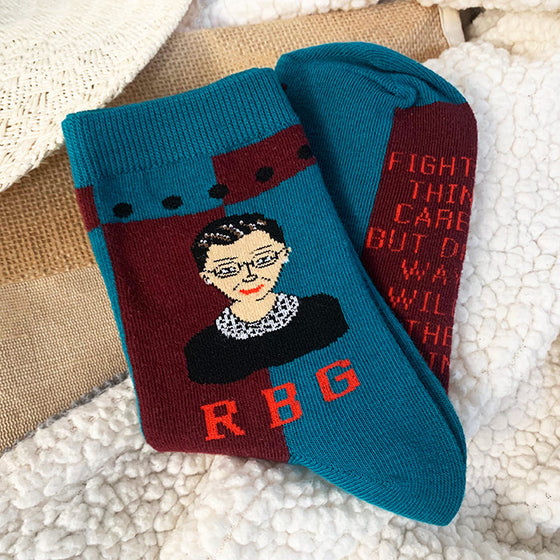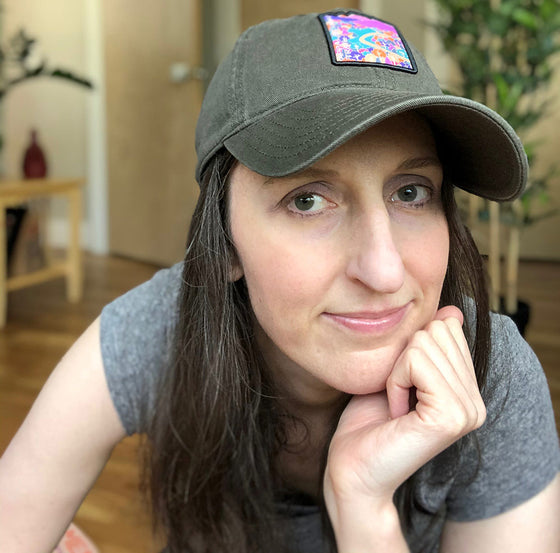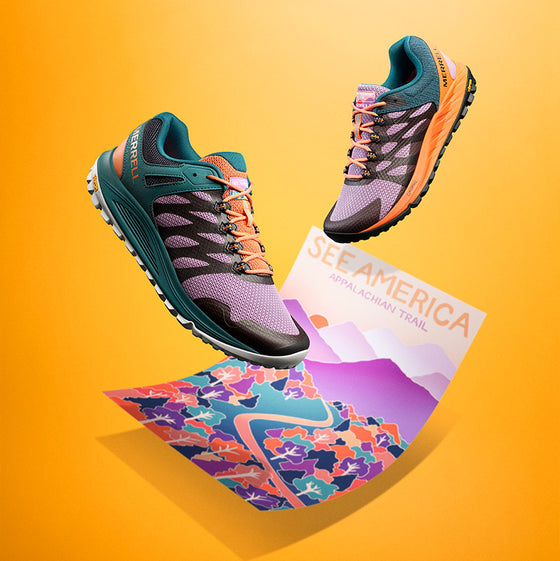
In 2008, Aaron (my bff since preschool) and I were finishing college, Barack Obama was running for President, and Aaron and I launched Design For Obama. It was a website where anyone could upload poster art for the campaign, and anyone could download and print that art for free. To our amazement, the project took off. Hundreds of artists contributed poster designs, the project was featured in the NY Times, and we published the collection as a coffee table book with Spike Lee. The artists involved started asking the same question we were asking ourselves - ‘what’s next?’

Designforobama.org, A poster at a rally, and "Design for Obama. Posters for Change: A Grassroots Anthology" published by Taschen Books
We knew that the creative community that had formed around Design For Obama was special. And we had a theory that somewhere in that mix of crowdsourcing art, new social media platforms, and the growing trend of consumers spending their dollars expressing their values, we could make a real business. So in 2013, after 4 years of running our own design agency, we launched Creative Action Network - a global community of artists & designers making art with purpose. The idea was like Design For Obama, to invite artists to make work around all sorts of causes, and instead of only offering free downloads, we’d sell posters, t-shirts, and other physical goods make money, support the artists, and our non-profit partners.
Luckily, we were in San Francisco, where the whole city seemed set up to help people like us (more on that in a later post). The path for starting a business seemed super simple and clear:
So we applied to accelerator programs, and were fortunate enough to be accepted into Matter, then a brand new accelerator program focused on companies “changing media for good.” The program was invaluable for us, and nearly 5 years later, we’re still super grateful and involved in the Matter community.

But we learned the hard way that the one-size-fits-all path we’d imagined wasn’t right for us after all. We launched out of our big Matter demo day all-in on the process of raising money from Venture Capital firms. We had our snazzy deck, we had our elevator pitch, we had our 7 minute pitch, we had our 2 minute pitch, and we were ready to rock it.
But after 50 or so meetings, 50 or so “no thank you’s” and $0 raised, we had to pull the plug. The whole thing was hugely demoralizing. It felt like failure - like our idea was stupid, like we were incompetent, and that we’d wasted the last few years of our lives. Worse yet was how the process made us spend time and energy answering questions or entertaining ideas that were totally antithetical to our mission.
With a bit of hindsight and wound licking, we learned to see the experience not as proof of failure, but as proof that we weren’t a fit for VC funding. We realized that it was ONE way to grow a business, but not THE ONLY way to grow a business, and not right for us for a few reasons.
All that’s not to mention the broader, societal implications of the VC model that we just found kind of icky:
For us, the immediate alternative to VC funding was bootstrapping, or what most of the world calls making money by selling goods and services. Just as investors were telling us “no” nearly every day, we closed our first big retail partnership with Patagonia, and since then have been growing by selling our products online and in retailers nationwide, like Urban Outfitters and Target.

Space Horizon Shirt available at Urban Outfitters, See America Book at Joshua Tree National Park, Limited Edition See America Yankee Candle Series
Last year, due in part to changes in the retail landscape, and in part to the surge in energy in our artist community post 2016 election, we identified our first real need for outside capital. This time, we knew it wouldn’t be coming from Venture Capital. The problem was, as far as start-up funding sources in the bay area goes, “not VC” isn’t really an option. You can be a non-profit and get grants, you can be established business and get bank loans, or you can be start-up and sell equity in your company to VC’s, that’s basically it. Even with impact investors interested in social-impact companies, and with most angel investors acting independently, the core financing infrastructure they all rely on is still generally the VC model, that puts companies on a path towards exit or bust.
We were still structuring the deal as a convertible note, because that was literally the only way we knew you could structure it - we’d never heard of a start-up at our stage doing anything else. We knew it wasn’t a perfect fit, that a convertible note only “converts” upon a future financing event or exit, and those weren’t things we ever wanted to do. But it was something we could ask people to sign, and just getting people to say yes seemed hard enough without trying to do anything non-standard.
In 3 months, after about 45 meetings, we had just 3 people say yes, but at least we were on the board and encouraged. At that point we connected with Purpose Ventures, a new firm based in SF and Germany who liked what we were doing and more importantly, introduced us to a novel model for companies like us who needed capital and wanted to stay independent. The ownership concept is called Steward Ownership, the idea that companies should exist to do something for society beyond maximize shareholder profit - a fairly commonplace notion in Europe (and throughout American history) and that the people making decisions for the company should be the ones running it, not a board made up of outside investors.

Hear Our Voice by Liza Donovan at the Women's March, San Francisco Public Library bus ads featuring Recovering the Classics designs, Patagonia employees with Vote the Environment designs at the People's Climate March
And they backed that idea up with an investment model that was based not on future speculation, but on capped dividends (sometimes called Demand Dividends). Once we hit a certain revenue threshold, we start paying a portion of our profits back to our investors, until they’ve all received 5x their initial investment. That solved the “exit” problem, and meant investors can make a solid return without CAN ever being sold. Finally, we’d found a way to raise money that actually reflected our goals and our values.
“CAN is making huge impact by aligning their business model directly with their impact. We are proud of helping structure an investment that will support and grow that in the long-term.” - Derek Razo, Purpose Ventures
Their commitment pushed a few more angels to our side, and brought our total investment round to $380,000 - $30,000 more than the goal we started with! But more than the money, we had a financing structure that actually aligned everyone’s incentives: When CAN makes money, our artists make money, our non-profit partners make money, our investors make money, and most importantly, more social-impact artwork is created and distributed. There’s no pressure of an exit looming to distract us from the real work of the business. We’re focused on our artists, our customers, and our impact, not on the hopes of a bigger future deal. And with a 5x return, our investors are still poised to make real money over time, without pressuring us towards unreasonable scale or away from our mission.
With Purpose on board, we still had the daunting task of convincing our previous investors who had signed the convertible note earlier in the round, including CAN artist Crystal and her husband Chris Sacca - well known VCs themselves - and also Matter.vc, who still owned an equity stake in the company and is a real life VC firm - to sign on to this new structure. Lucky for us, they were all enthusiastically supportive of CAN, and of the larger need for alternative financing and ownership models.
“We are excited to be participating in the unique financing and ownership models that Creative Action Network and Purpose developed and we were honored to help Max navigate that unknown territory,” says Corey Ford, the Co-Founder and Managing Director of Matter Ventures. “We’ve always believed in the power of Creative Action Network to have a positive, scalable impact on society and to build a sustainable business. We’re excited that they’ve cracked the financing and ownership model that not just works for them but for the whole community that has supported them along the way. We believe it makes sense to find the right financing model for startups that have the potential to make an impact and a return but aren’t poised to be the next Google. There are a lot of startups out there like that and this model hopefully is a blueprint for how they can finance themselves going forward.” - Corey Ford, Matter.vc
It was super hard. Getting the eight investors who ultimately said yes still involved about 65 other prospects who all said no. It took 6 months to get the investors committed, and another 6 months to put the legal paperwork together and get it all executed. We had to draft more documents, negotiate more stuff, spend more time, and way more money, putting it all together than if we had stuck with the standard convertible note. We rechartered as a Public Benefit Corporation, set up a new ownership structure ensuring power stays in the hands of our artists and community even after the founders leave, and couldn’t be more proud of what we’ve built.

Recovering the Classics gallery show at the New York Public Library, See America pop-up at the U.S. Embassy in Bahrain, Space Horizons pop-up in New York
I’m sure it’s not perfect. But what we need right now isn’t perfection, it’s experimentation. We’ve had decades to observe what the VC model does and doesn’t do, and it clearly can and should continue to play an important role. But for a place that prides itself on innovation, Silicon Valley should have more than one financing option from the 1950’s. We hope that others can learn from our experiences, and make these alternative financing models more mainstream, easier, and cheaper for companies and investors. We’re encouraged to know we’re not alone, that there are lots of entrepreneurs and investors (yes, even VCs themselves!) already working to create more alternatives for start-ups. We’re particularly inspired by groups like the Zebra Movement who are bringing together founders and funders around these issues, and by our own community of investors who took an early bet on CAN and on this idea.
Thank you to everyone who helped make this happen - Corey Ford, Ben Werdmuller, and the team at Matter Ventures, Armin Steurernagel, Alex Kuhl, and Derek Razo at Purpose Ventures, Crystal & Chris Sacca, Lorrie & Jack Meyercord, Tracey & Jim Fuller, Courtney & Nick Leader, Madison Lamar, Dheeraj Sanka, Christina Bang, Sheri Conn, Natalie Foster, Christie George, Brian Mayer, and Laura Callanan. Extra special shout out to Brian Mikulencak and his team at Blue Dot Law, who did all the actual work (only partially kidding). And we of course wouldn’t have even been able to try without our incredible community of artists, and the inspiring work they create every day. For more on that, visit our website and maybe even buy something.


